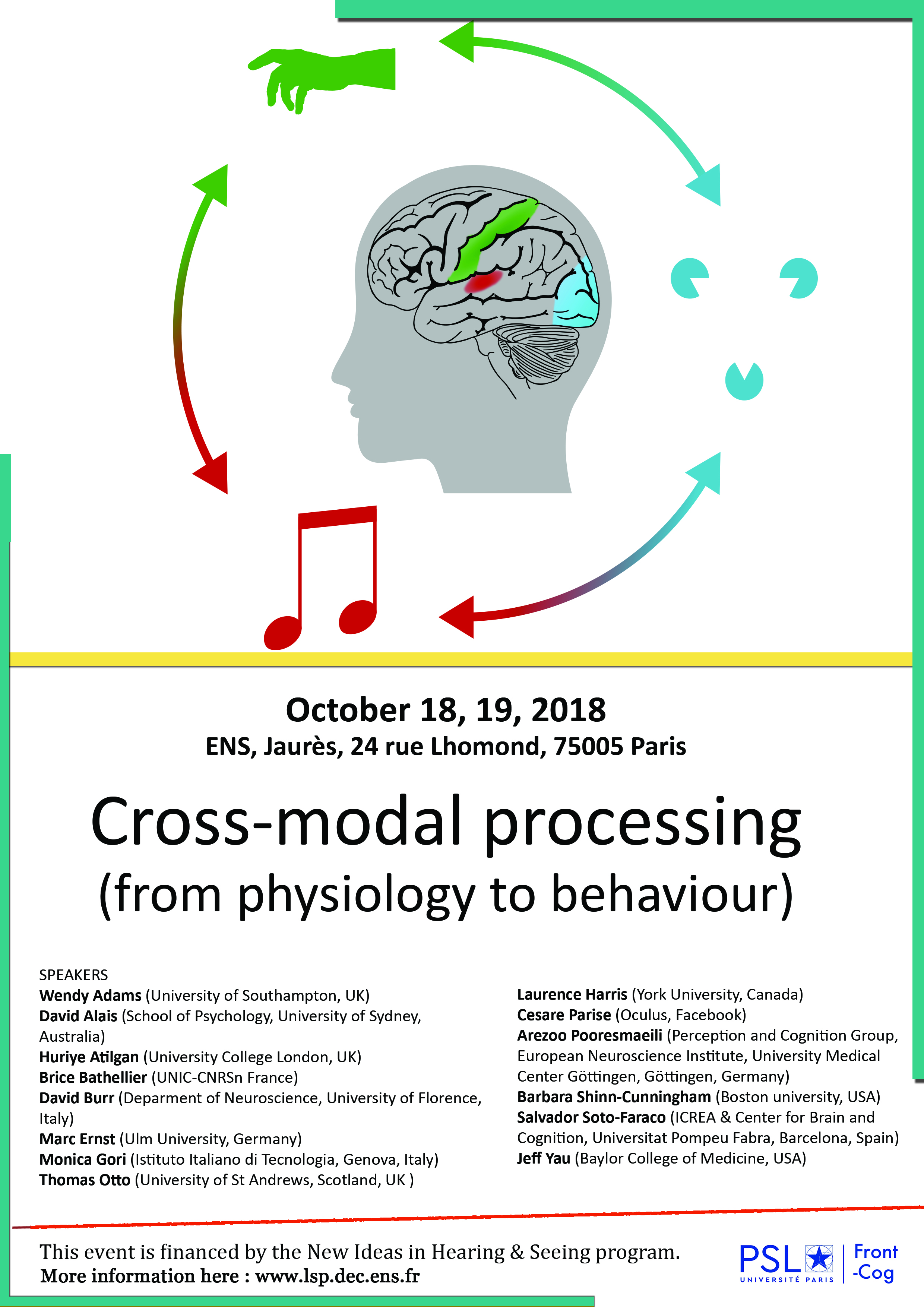Cross-modal processing (from physiology to behaviour)
Cross-modal processing (from physiology to behaviour)
October 18-19, 2018 at ENS in Jaurès, 24 rue Lhomond, 75005 Paris
This event is financed by the New Ideas in Hearing & Seeing programme.


October 18-19, 2018 at ENS in Jaurès, 24 rue Lhomond, 75005 Paris
This event is financed by the New Ideas in Hearing & Seeing programme.

October 18-19, 2018 at ENS in Jaurès, 24 rue Lhomond, 75005 Paris
This event is financed by the New Ideas in Hearing & Seeing programme.
Just by listening, humans infer a host of useful information about events in the world. Much is known about peripheral auditory processing, but auditory cortex remains poorly understood, particularly in computational terms. Here I will talk about my work exploring computational properties of cortical responses, through the lens of invariance.
Visual attention is essential for visual perception. Spatial attention
allows us to grant priority in processing and selectively process
information at a given location. In this talk, I will present empirical
studies:
(1) investigating how endogenous (voluntary) and exogenous (involuntary)
covert attention improve contrast sensitivity at attended locations and
have concurrent costs at unattended locations;
(2) testing predictions of a normalization model of attention; (3)
Pour rencontrer Johannes Ziegler, contacter Franck Ramus : franck.ramus@ens.fr
Abstract: Eye movements reveal important information about where people look and the patterns of these eye-movements are guided by the visual salience of objects around us (how much they “stand out” from their surroundings), our previous experience, dynamic cognit
Punishment involves paying a cost to harm another individual and is thought to be a key mechanism that promotes cooperation. Nevertheless, it is not clear (1) whether punishment has the effect of converting cheats into cooperators or (2) how punishment can be favoured by selection, given that it involves costs to punishers. Here, I will use the cleaner fish-client mutualism as a model species to show that punishment does indeed promote cooperation in some contexts.
Just by listening, humans can determine who is talking to them, whether a window in their house is open or shut, or what their child dropped on the floor in the next room. This ability to derive information from sound is enabled by a cascade of neuronal processing stages that transform the sound waveform entering the ear into cortical representations that are presumed to make behaviorally important sound properties explicit.